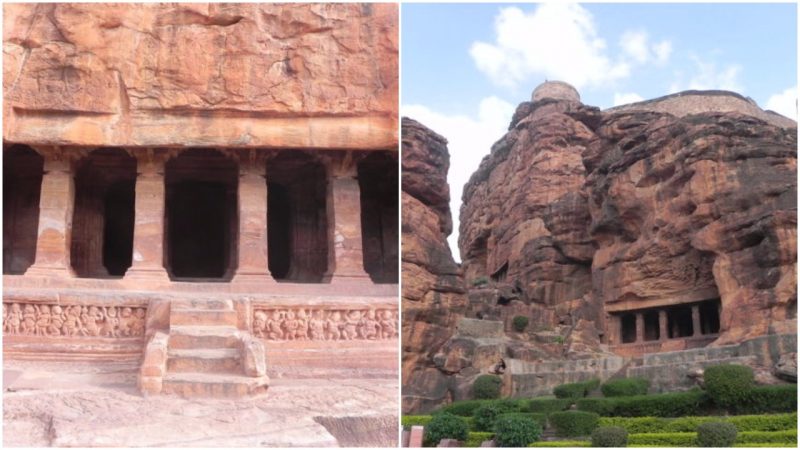In the town of Badami, located in North Karnataka in India, there is a complex of cave temples which are one of the most exquisite examples of Indian rock-cut architecture. In the 6th century, the town was known as Vatapi, and it was the Capital of the ancient kingdom of Chalukyas.
The whole town is surrounded by forts which were built from the 6th to the 8th century. The Chalukyas made the construction of the forts with the caves in Chalukya style.
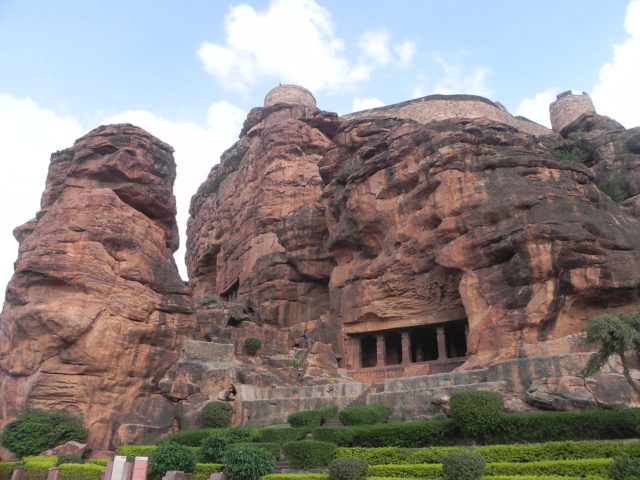
The caves temples were carved out of the soft sandstone from the cliffs, and they are one of the earliest known examples of Hindu temples. Each of the caves has an open verandah, a sanctum, and pillars. The main hall of each temple, which is called maha mandapa, is standing on massive columns. One of the most important features of the caves are the ancient inscriptions in Kannada writing and Sanskrit languages.
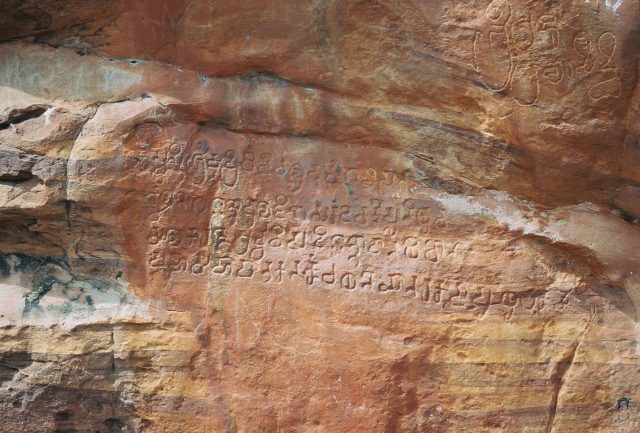
The oldest cave was built in 575 AD and is about 59 feet above ground level on the northwestern part of the hill. The main hall of this cave contains pillars and a square shaped shrine at the back wall. It is carved with magnificent reliefs; the most impressive ones include the god Shiva shown in 81 dancing positions.
The second cave, Cave 2, was built in the late 6th century and is dedicated to Vishnu. There is an enormous relief that shows Vishnu as a dwarf or Trivikrama with one foot on Earth and another directed to the north. Another form of Vishnu portrayed in this cave is as a boar or Varaha in the Sanskrit language. On the ceiling of this cave, there is a wheel with 16 fish spokes with swastikas in a square frame. The main hall is supported by eight bug square pillars which are in two rows. On the entrance of the cave, there are two guardians armed with flowers rather than weapons.
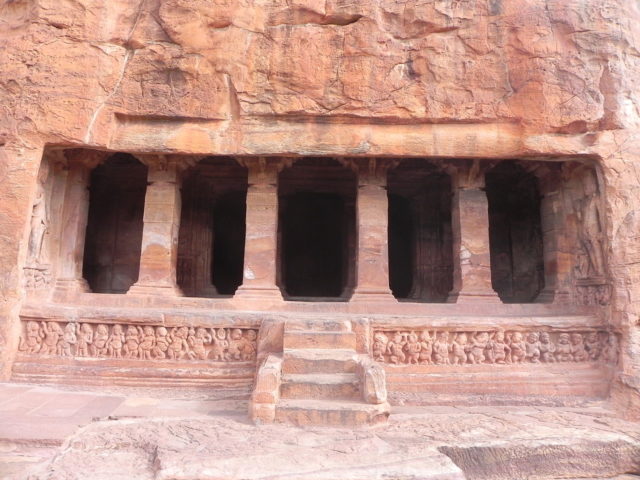
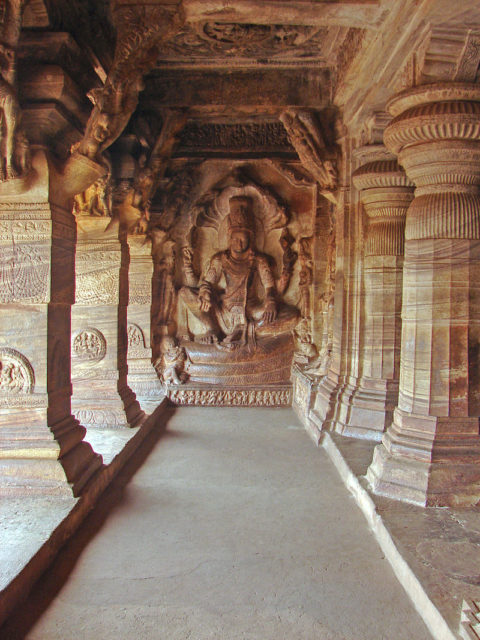
The third cave is also dedicated to Vishnu and is the largest and most renowned cave temple in Badami. It is the highlight of Deccani art, and it has giant figures of Trivikrama, Harihara, and Varaha. There are also fresco paintings on the ceiling as the other caves, and some of them are faded and unclear today. These paintings are one of the earliest known surviving evidence of fresco art in India. One of the most beautiful paintings in this cave can be seen on one of the murals, and it is the wedding of Shiva ana Parvati.
The main hall together with the verandah goes up to 47.5 ft deep into the mountain and contains inscriptions by the Chalukya king, Mangalesa, in Kannada, made in 578 AD. Lying to the east of cave three is cave four, situated higher than the other caves. It is the only Jain temple in the complex with an image of Mahavira adorning the sanctum. He is represented sitting on a giant lion throne.
Built in the late 6th century, this cave is the newest cave in the compound. People from all over the world come to Badami to visit these remarkable shrines because of their beautiful architectural style of the ancient times.
The Badami caves are the first example of later Hindu temples in the region, and the whole complex is part of the UNESCO World Heritage Site.
